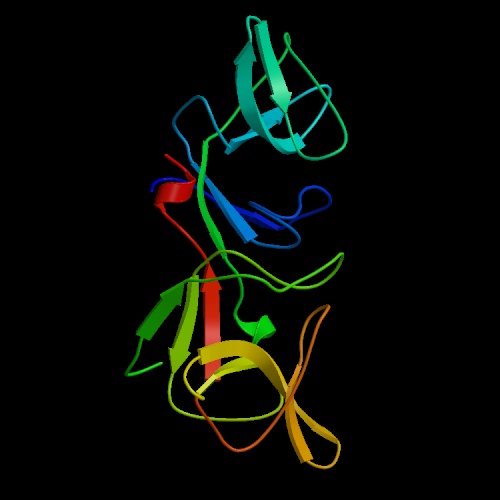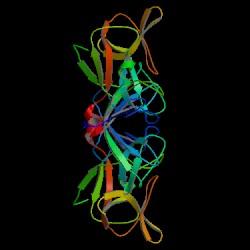Part:BBa_C0051
cI repressor from E. coli phage lambda (+LVA)
Coding region for the cI repressor based on cI repressor from bacteriophage lambda modified with an LVA tail for rapid degradation of the protein. cI repressor binds to the cI regulator (BBa_R0051).
An alternate version of this part is available without a barcode: BBa_K327018.
>Internal Priming Screening Characterization of BBa_C0051: Has 3 possible internal priming site between this BioBrick part and the VF2 primer and 1 possible internal priming site between this BioBrick part and the VR primer.
The 2018 Hawaii iGEM team evaluated the 40 most frequently used BioBricks and ran them through an internal priming screening process that we developed using the BLAST program tool. Out of the 40 BioBricks we evaluated, 10 of them showed possible internal priming of either the VF2 or VR primers and sometime even both. The data set has a range of sequence lengths from as small as 12 bases to as large as 1,210 bases. We experienced the issue of possible internal priming during the sequence verification process of our own BBa_K2574001 BioBrick and in the cloning process to express the part as a fusion protein. BBa_K2574001 is a composite part containing a VLP forming Gag protein sequence attached to a frequently used RFP part (BBa_E1010). We conducted a PCR amplification of the Gag-RFP insert using the VF2 and VR primers on the ligation product (pSB1C3 ligated to the Gag + RFP). This amplicon would serve as template for another PCR where we would add the NcoI and BamHI restriction enzyme sites through new primers for ligation into pET14b and subsequent induced expression. Despite gel confirming a rather large, approximately 2.1 kb insert band, our sequencing results with the VR primer and BamHI RFP reverse primer gave mixed results. Both should have displayed the end of the RFP, but the VR primer revealed the end of the Gag. Analysis of the VR primer on the Gag-RFP sequence revealed several sites where the VR primer could have annealed with ~9 - 12 bp of complementarity. Internal priming of forward and reverse primers can be detrimental to an iGEM project because you can never be sure if the desired construct was correctly inserted into the BioBrick plasmid without a successful sequence verification.
For the BioBrick part BBa_C0051, the first location of the internal priming site is on the 606-599 base number of the BioBrick and on the 4-11 base number of the VF2 primer. The the second location of the internal priming site is on the 347-353 base number of the BioBrick and on the 4-10 base number of the VF2 primer. The third location of the internal priming site is on the 484-490 base number of the BioBrick and on the 6-12 base number of the VF2 primer. The final location of the internal priming site is on the 214-208 base number of the BioBrick and on the 9-15 base number of the VR primer.
Sequence and Features
- 10COMPATIBLE WITH RFC[10]
- 12COMPATIBLE WITH RFC[12]
- 21COMPATIBLE WITH RFC[21]
- 23COMPATIBLE WITH RFC[23]
- 25COMPATIBLE WITH RFC[25]
- 1000COMPATIBLE WITH RFC[1000]
Functional Parameters
| direction | Forward |
| function | Rep |
| ligands | RecA |
| protein | CI lambda |
| swisspro | P03034 |
| tag | LVA |
Structure
Functional Parameters: Austin_UTexas
Burden Imposed by this Part:

Burden is the percent reduction in the growth rate of E. coli cells transformed with a plasmid containing this BioBrick (± values are 95% confidence limits). This part exhibited a significant burden. Users should be aware that BioBricks with a burden of >20-30% may be susceptible to mutating to become less functional or nonfunctional as an evolutionary consequence of this fitness cost. This risk increases as they used for more bacterial cell divisions or in larger cultures. Users should be especially careful when combining multiple burdensome parts, as plasmids with a total burden of >40% are expected to mutate so quickly that they become unclonable. Refer to any one of the BBa_K3174002 - BBa_K3174007 pages for more information on the methods and other conclusions from a large-scale measurement project conducted by the 2019 Austin_UTexas team.
This functional parameter was added by the 2020 Austin_UTexas team.
Improvement by AIS-China 2023
Tcl40
In the biotechnological industry, temperature sensitive control systems has been widely employed, with the λpL/pR-cI system being the most common. One of its components, the pL/pR, is a temperature induced promoter originating from phage λ. Another component, cI, is a temperature sensitive repressor that can combine with the pL/pR promoter, and in result inhibiting the transcription process of the gene regulated by pL/pR promoter. Commonly, cI repressor forms a dimer and binds to pL/pR promoter, thereby inhibiting gene expression at low temperatures. Yet when temperatures rise to a certain point, the cI repressor shifts a dimer to two monomers, thus cancelling transcription inhibition. Clearly, the sensitivity to temperature of cI repressor is essential.
This year we improved BBa_C0051(wild type of cI from phage λ), Which we called TcI. We mutated TcI to create TcI40. We then tested the temperature induction threshold value of both TcI and TcI40. At a temperature of 40 degrees celcius, TcI40 loses its transcription inhibition effects, and reaches climax values of gene expression. We offer this part to future iGem teams needing a temperature sensitive control system.
Design

Figure: the state of cI repressor in different temperature
Characterization
To enable the practical large-scale implementation of our α-kb production method, we made the strategic decision to transition from using IPTG-induced expression to a more user-friendly and cost-effective temperature-controlled induction approach. To achieve this objective, we tested two temperature-sensitive repressors: TcI and TcI40.
In comparison to TcI, TcI40 exhibited nonsynonymous mutations at six distinct positions, resulting in alterations to six amino acids: L65S, A67T, K68R, F115L, D126G, and D188G. Additionally, seven synonymous mutations (base is changed but amino acid remains constant) were also present: A50, I69, E128, R129, T152, S160, and L185(fig.1B).

Figure 1: (A)The design of TcI-pR/pL control circuit. (B)The mutation of TcI40 compared to TcI.
We tested the two temperature sensitive repressors in the DH5a strain with RFP as the signaling protein, and the test was carried out in two groups each using one of the stated repressors. The first group's RFP was expressed using a plasimd containing repressor TcI, and the latter group used a plamid containing repressor TcI40. The visible red color of expressed RFP proteins indicates if or if not the repressors loses its inhibitive effects on transcription (and thus expression of genes) at a given temperature.
The results of this test show that at a temperature of 30 degrees Celsius, no visible red color can be seen (fig.2A), indicating that no RFP is expressed. Thus signaling that repressor TcI and TcI40 both show effective inhibition on the transcription process of RFP at such a given temperature. At a temperature of 37 degrees celcius, the transcription inhibition effect of repressor TcI ceases, and RFP expression values reaches its climax. At temperatures of 37, 40 and 42 degrees Celcius, the transcription inhibition effect of repressor TcI40 ceases, while climax values of RFP expression occur at a temperature of 40 degrees Celcius.
We have successfully tested two temperature control systems. By comparing TcI and TcI40 on RFP fluorescence at different induced temperatures, we can find that TcI40 can maximize the suppression of pR/pL promoter, so as to achieve the highest gene expression . In the future industrial production of a-KB, we hope to use TcI40 repressor to induce the production of a-KB to achieve temperature control production in large scale.
Figure2: Test TcI and TcI38 repressors at different induction temperatures.
Sequence and Features
- 10COMPATIBLE WITH RFC[10]
- 12COMPATIBLE WITH RFC[12]
- 21COMPATIBLE WITH RFC[21]
- 23COMPATIBLE WITH RFC[23]
- 25COMPATIBLE WITH RFC[25]
- 1000COMPATIBLE WITH RFC[1000]
References:
Cheng L, Wang J, Zhao X, et al. An antiphage Escherichia coli mutant for higher production of L-threonine obtained by atmospheric and room temperature plasma mutagenesis. Biotechnol Prog. 2020;36(6):e3058. doi:10.1002/btpr.3058
Li Q, Sun B, Chen J, Zhang Y, Jiang Y, Yang S. A modified pCas/pTargetF system for CRISPR-Cas9-assisted genome editing in Escherichia coli. Acta Biochim Biophys Sin (Shanghai). 2021;53(5):620-627. doi:10.1093/abbs/gmab036
Restrepo-Pineda S, O Pérez N, Valdez-Cruz NA, Trujillo-Roldán MA. Thermoinducible expression system for producing recombinant proteins in Escherichia coli: advances and insights. FEMS Microbiol Rev. 2021;45(6):fuab023. doi:10.1093/femsre/fuab023
Chen L, Chen Z, Zheng P, Sun J, Zeng AP. Study and reengineering of the binding sites and allosteric regulation of biosynthetic threonine deaminase by isoleucine and valine in Escherichia coli. Appl Microbiol Biotechnol. 2013;97(7):2939-2949. doi:10.1007/s00253-012-4176-z
Zhang C, Qi J, Li Y, et al. Production of α-ketobutyrate using engineered Escherichia coli via temperature shift. Biotechnol Bioeng. 2016;113(9):2054-2059. doi:10.1002/bit.25959
Park JH, Oh JE, Lee KH, Kim JY, Lee SY. Rational design of Escherichia coli for L-isoleucine production. ACS Synth Biol. 2012;1(11):532-540. doi:10.1021/sb300071a
Hao R, Wang S, Jin X, Yang X, Qi Q, Liang Q. Dynamic and balanced regulation of the thrABC operon gene for efficient synthesis of L-threonine. Front Bioeng Biotechnol. 2023;11:1118948. Published 2023 Mar 2. doi:10.3389/fbioe.2023.1118948
//cds/transcriptionalregulator/repressor
//function/regulation/transcriptional
| direction | Forward |
| function | Rep |
| ligands | RecA |
| protein | CI lambda |
| swisspro | P03034 |
| tag | LVA |

 1 Registry Star
1 Registry Star

